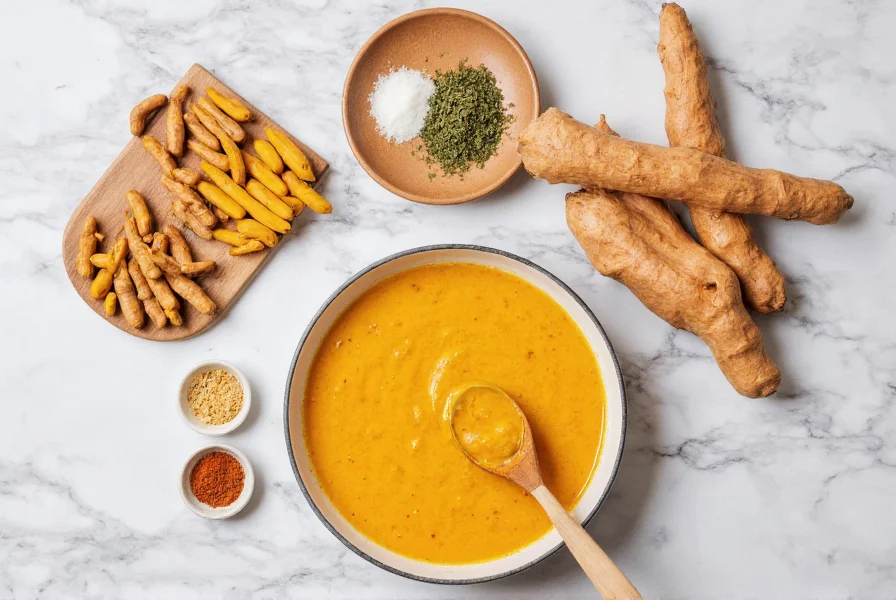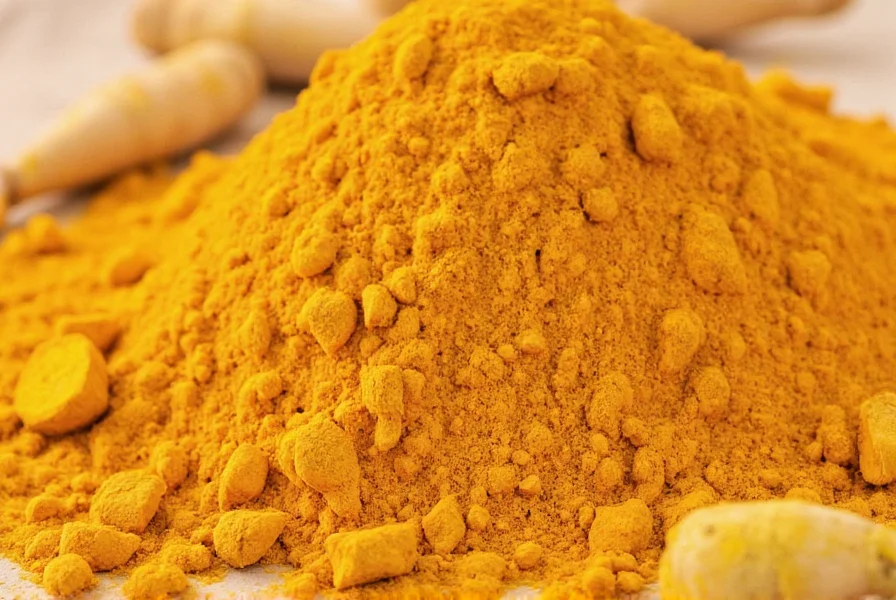Turmeric, the vibrant yellow-orange spice derived from the Curcuma longa plant's rhizome, has been a cornerstone of culinary and medicinal traditions across Asia for over 4,000 years. Today, modern science continues to validate many of its traditional applications while uncovering new potential benefits. Understanding what turmeric is used for requires examining both historical context and contemporary research.
Historical and Traditional Uses of Turmeric
Originating in Southeast Asia, turmeric spread throughout ancient trade routes, becoming integral to multiple cultural practices. In traditional Ayurvedic medicine, practitioners have used turmeric for:
- Digestive support and liver function enhancement
- Wound healing and skin condition treatment
- Respiratory ailment management
- Anti-inflammatory applications for joint health
- Ritualistic and religious ceremonies
Ancient Chinese medicine similarly employed turmeric for blood purification and pain relief. Traditional uses extended beyond health applications—turmeric served as a natural dye for textiles and religious garments, and as a preservative in food preparation.
Culinary Applications Worldwide
Turmeric's earthy, slightly bitter flavor and vibrant color make it indispensable in global cuisines:
| Regional Cuisine | Primary Uses | Signature Dishes |
|---|---|---|
| Indian | Base for curry powders, rice dishes, lentils | Curries, biryanis, dals |
| Southeast Asian | Marinades, soups, rice dishes | Thai yellow curry, Indonesian rendang |
| Middle Eastern | Rice preparations, spice blends | Iranian jeweled rice, Turkish spice mixes |
| Western | Mustards, cheese coloring, health beverages | Golden milk, turmeric lattes |
Chefs value turmeric not only for its distinctive flavor profile but also for its natural coloring properties, which provide the characteristic yellow hue to mustard and American cheese without artificial dyes.
Scientifically-Supported Health Applications
The active compound curcumin (making up about 3% of turmeric by weight) drives most researched health benefits. Modern applications with scientific backing include:
Anti-Inflammatory Properties
Chronic inflammation contributes to numerous health conditions. Multiple studies, including research published in the Journal of Medicinal Food, demonstrate that curcumin's anti-inflammatory effects compare favorably with some pharmaceutical agents, but without the same side effect profile. People commonly use turmeric for:
- Managing osteoarthritis symptoms
- Reducing exercise-induced muscle soreness
- Supporting inflammatory bowel conditions
Antioxidant Capacity
Turmeric boosts the body's antioxidant enzymes while neutralizing free radicals directly. This dual action helps protect cells from oxidative damage, potentially slowing aging processes and reducing disease risk. Research in Oxidative Medicine and Cellular Longevity confirms these mechanisms.
Cognitive and Mental Health Support
Emerging research suggests turmeric may support brain health by increasing brain-derived neurotrophic factor (BDNF), a growth hormone that functions in the brain. A 2018 study in the American Journal of Geriatric Psychiatry found that curcumin supplementation improved memory and attention in non-demented adults.
Cardiovascular Benefits
Studies indicate turmeric may improve endothelial function (the lining of blood vessels), which plays a crucial role in blood pressure regulation. Research published in Nutrition Research shows potential cardiovascular protective effects comparable to exercise in some populations.

Modern Practical Applications
Beyond traditional and scientifically-supported uses, contemporary applications include:
- Natural dye: For textiles, food, and cosmetics
- Skin care: In formulations targeting inflammation and oxidative damage
- Household cleaning: As a natural antiseptic in some traditional cleaning solutions
- Food preservation: Leveraging its antimicrobial properties
Maximizing Turmeric's Benefits
To enhance turmeric's bioavailability (how much your body can use), consider these evidence-based approaches:
- Combine with black pepper (piperine increases absorption by up to 2,000%)
- Consume with healthy fats (curcumin is fat-soluble)
- Heat gently during cooking (improves solubility)
- Consider standardized curcumin extracts for therapeutic applications
Safety Considerations and Dosage
While culinary use of turmeric is generally safe, therapeutic doses require consideration:
- Typical culinary use: 1-3 grams of powdered root daily
- Therapeutic doses: 500-2,000 mg of curcumin extract
- Potential interactions with blood thinners and diabetes medications
- May cause gastrointestinal discomfort at high doses
- Consult healthcare providers before therapeutic use, especially with medical conditions
Research published in Food and Chemical Toxicology confirms turmeric's safety at culinary doses, while noting that extremely high supplemental doses may cause issues in sensitive individuals.

Conclusion
Understanding what turmeric is used for reveals a remarkable convergence between ancient wisdom and modern science. From its foundational role in global cuisines to its evidence-supported applications for inflammation management and overall wellness, turmeric remains one of nature's most versatile botanicals. Whether incorporated into daily cooking or used therapeutically under professional guidance, turmeric offers multiple pathways to support health and wellbeing grounded in both tradition and scientific validation.
Frequently Asked Questions
What is turmeric most commonly used for in traditional medicine?
In traditional Ayurvedic and Chinese medicine systems, turmeric has been primarily used for digestive support, wound healing, reducing inflammation in joints, and treating skin conditions. Ancient practitioners valued it for its purported blood-purifying properties and respiratory benefits, with historical texts documenting its use for thousands of years across Asian cultures.
How much turmeric should I consume daily for health benefits?
For general wellness through culinary use, 1-3 grams of powdered turmeric root daily (approximately ½ to 1½ teaspoons) provides benefits. Those seeking therapeutic effects from curcumin may require 500-2,000 mg of standardized curcumin extract, often taken with black pepper to enhance absorption. Always consult with a healthcare provider before starting therapeutic supplementation, especially if you have medical conditions or take medications.
Can turmeric help with arthritis symptoms?
Multiple clinical studies, including research published in the Journal of Medicinal Food, indicate that turmeric—specifically its curcumin component—can significantly reduce pain and improve function in people with osteoarthritis. The anti-inflammatory effects appear comparable to some non-steroidal anti-inflammatory drugs (NSAIDs) but with fewer gastrointestinal side effects. Most studies showing benefits used standardized curcumin extracts at doses of 1,000 mg daily.
What's the difference between turmeric and curcumin?
Turmeric is the whole spice derived from the Curcuma longa plant's rhizome, containing approximately 3% curcumin by weight. Curcumin is the specific bioactive compound within turmeric responsible for most of its yellow color and researched health benefits. While turmeric contains other beneficial compounds, curcumin represents the most studied component, which is why many therapeutic applications use standardized curcumin extracts that concentrate this specific compound.
Does cooking affect turmeric's health benefits?
Gentle cooking actually enhances turmeric's benefits by increasing curcumin's solubility. Research shows that heating turmeric in liquid (like when making golden milk or adding to soups) improves its bioavailability. However, extremely high temperatures for prolonged periods may degrade some compounds. For maximum benefit, combine cooked turmeric with healthy fats (like coconut oil) and black pepper, which significantly increases absorption of the active compounds.











 浙公网安备
33010002000092号
浙公网安备
33010002000092号 浙B2-20120091-4
浙B2-20120091-4